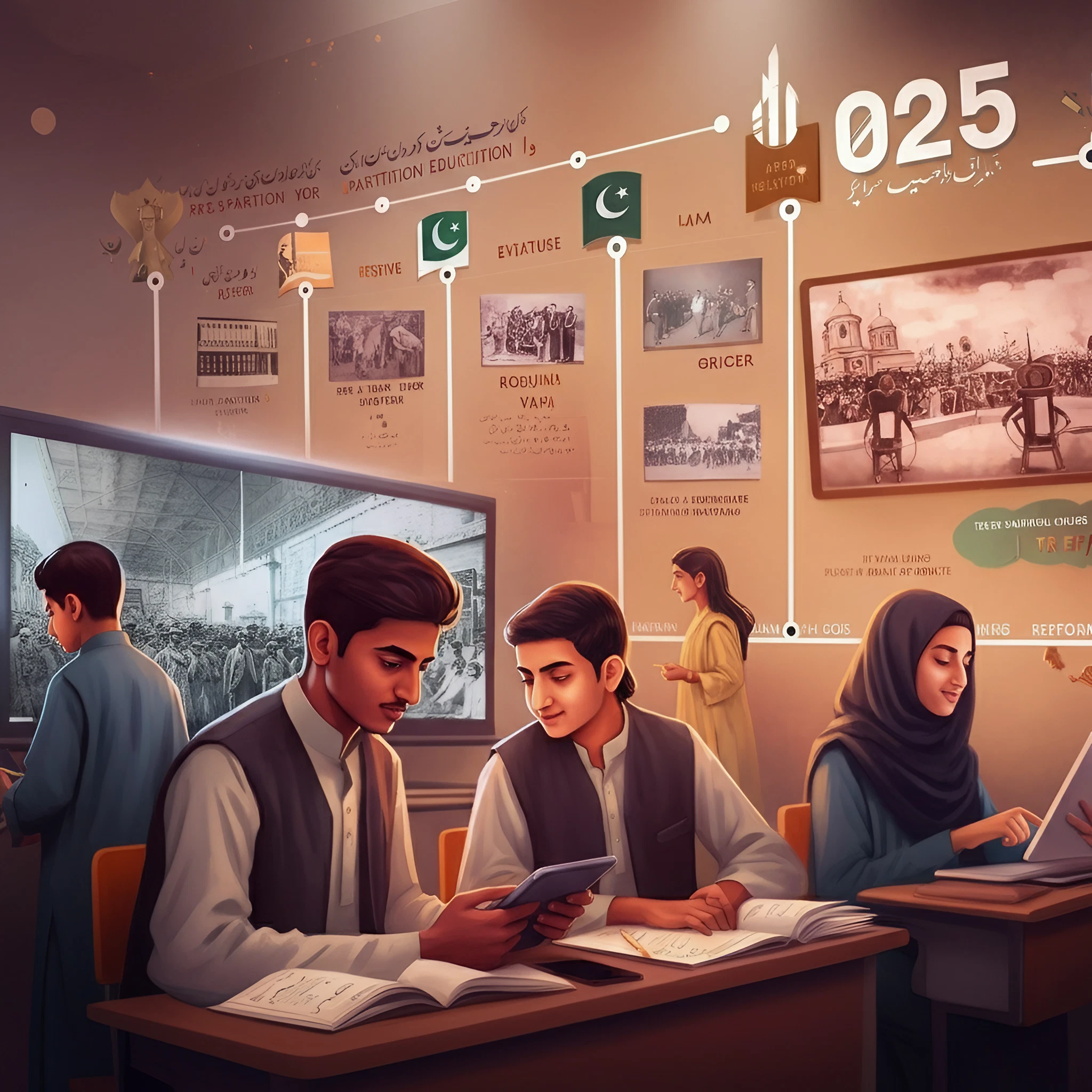Pakistan’s Education in 2025: Past, Present, and Future
Education is what turns a nation into a powerful state. For a progressing country such as Pakistan, there are numerous hurdles to overcome in order to meet the expectations of an emerging economy. What will the landscape of Pakistan’s education be like in 2025? In this article, I will highlight its journey, its current state, and the prospects to come.
Comprehending the Education System of Pakistan
The Schooling Structure in Pakistan is composed of primary, secondary, and higher education levels. Public schools provide free education until secondary level, but private schools tend to fill the gap by ensuring better quality education.
As stated by the Federal Ministry of Pakistan, more than 22.8 million children are currently not in any schooling institutions, which is concerning. Gaps in gender and region still persist, with greater focus paid towards the urban regions as compared to the rural regions. In between this chaos, there is some hope as some systems are already striving for improvement.
A Different Approach
To analyze the possible advancement of education in Pakistan by the year 2025,one needs to put his thoughts in retrospect. The Indian subcontinent’s educational system was predominantly religious and colonial based prior to the region’s partition in 1947. After Partition, Pakistan received the aid of infrastructure, but escalating socio-economical problems rendered its development impossible.
With time, governments have adopted the nationalization policy in the 1970s and the privatization policy in the 1980s along with Education policy of 2009 to help overcome the obstacles. Other steps taken included tackling illiteracy, increasing the enrolment of women in educational institutions, and enhancing the general literacy with modernized teaching material. Nonetheless, implementation gaps recurrently obstructed meaningful development. Establishing connections between historical accomplishments with current policies would enable Pakistan to formulate solutions to persisting problems.
Status Quo of Pakistani Educational Institutions
Currently the Pakistan education sector is full of inhibitions alongside a glimpse of hope. If one were to focus on urban settings and elite institutions then, yes, development is being made. However, millions of children are deprived of the educational system and this issue goes particular deep within rural young girls. Let us deep dive:
Key Challenges
- Low Literacy Rates
Pakistan’s literacy rate, at approximately 59%, lags behind many developing nations. Female literacy remains even lower, especially in provinces like Balochistan and Sindh.
- Funding Shortfalls
Despite promises, Pakistan spends only 2.4% of GDP on education, far below the 4% minimum recommended by UNESCO. Lack of funds restricts improvements to infrastructure, teacher training, and classroom resources.
- Quality vs. Quantity
Even where schools exist, the quality of education is often inadequate. Teachers lack proper training, and curricula fail to align with modern job markets.
Progress Points
Efforts such as the Single National Curriculum (SNC) aim to reduce disparities between public and private schools, improving outcomes for all students. Additionally, the expansion of STEM education for girls and increased awareness of female empowerment provide hope for greater gender inclusivity.
Reforms and Initiatives
Over the last few years, Pakistan has implemented policies and initiatives to tackle these pressing issues. Here are some key examples:
Government Programs
- Hunarmand Jawan Program
Focused on vocational training, this initiative equips young Pakistanis with the skills required for competitive job markets.
- Ehsaas Education Stipends
These stipends incentivize parents to send children to school, particularly in underserved areas.
NGO & International Collaborations
- Taleemabad is an education app bringing digital learning to children in low-income households.
- Partnerships with organizations like UNICEF prioritize funding for rural schools and girl education.
Technology’s Role in Shaping Education
Technology is a game changer for education, and Pakistan is no exception. By 2025, digital transformation may accelerate accessibility, particularly in rural regions. Here’s how technology is already making an impact:
- E-Learning Platforms
Services such as Teach for Pakistan Online provide students with high-quality resources directly to their devices.
- Digital Classrooms
Schools adopting digital tools like smartboards and video-based tutorials integrate modern teaching methods for holistic learning.
- Online Teacher Training
Technology allows teachers in remote areas to access professional development programs. Trained educators can, in turn, raise the standard of education.
Success Stories from Pakistan
While hurdles remain, there are shining examples of progress:
- The Citizen Foundation (TCF) operates over 1,833 schools across rural Pakistan, educating more than 280,000 children annually.
- Malala Fund campaigns for girls’ right to education, prioritizing regions such as the Swat Valley.
- Aangan Trust bridges gaps in early childhood education, ensuring no child is left behind.
These efforts can serve as templates for future initiatives as they scale across the country.
What Will Education in 2025 Look Like?
By 2025, Pakistan’s education sector could witness significant improvements, driven by the following key changes:
- Greater Accessibility
Innovative funding models and technology integration could provide broader access to underserved populations.
- Focus on Quality
Improved teacher training programs and a modernized curriculum will produce better learning outcomes, preparing students for global challenges.
- Tech-Fueled Education
The way students interact and comprehend concepts in the classroom can be transformed through the integration and widespread use of AI, E-learning systems, and virtual reality tools. But to make this a possibility, there has to be a more cooperative approach from the government, civil society, and individuals.
Looking Forward
The aspiration to make Pakistan educated and powerful is achievable with current circumstances. With innovation, cooperation, and hard work, we can achieve monumental results towards the nation’s education obstacles.
How can you help them? Support organizations that advocate for change, volunteer for local educational initiatives, or propose more effective policies. We will make certain that every child in Pakistan is given a chance to shine by 2025.

